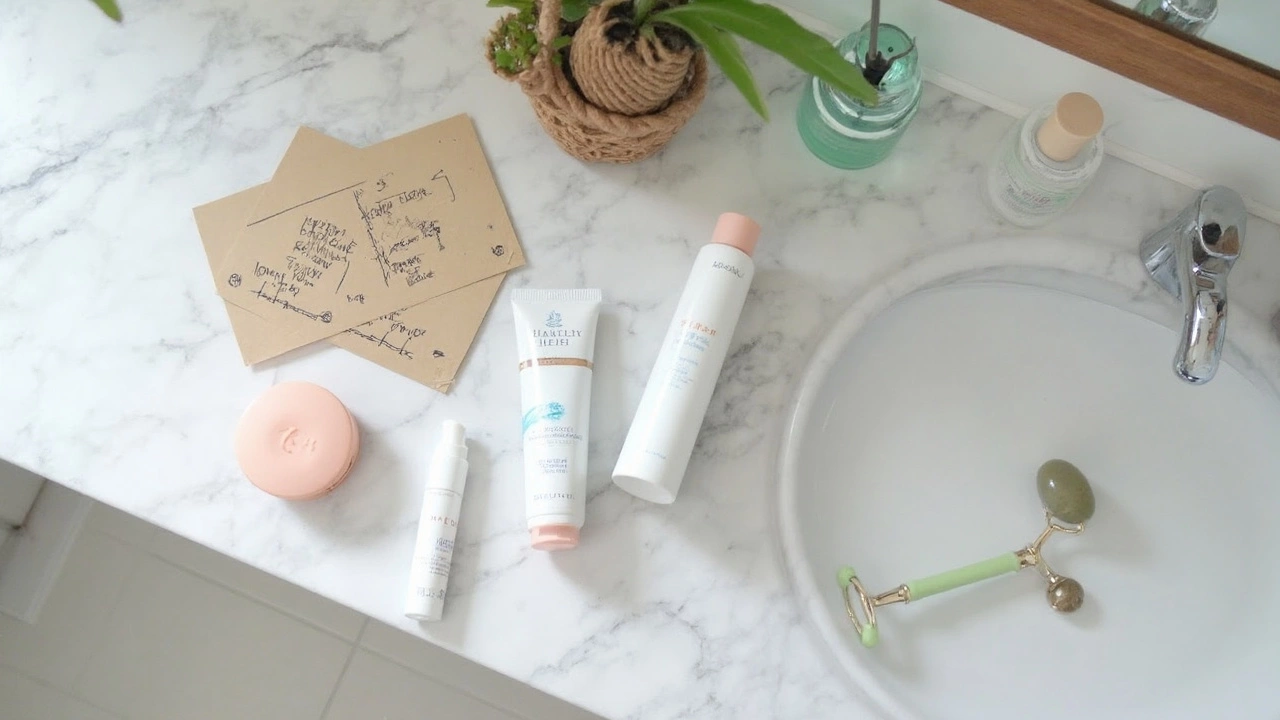Ever stood in front of a mirror and wondered if anything out there can actually turn back the clock on your skin? With every ad shouting about miracle creams and new lasers, it’s easy to get lost in the noise. The truth is, not every treatment lives up to the hype—and wasting cash on the wrong stuff can leave your skin (and wallet) feeling worse for wear.
What really works isn’t always the trendiest new thing. Some ingredients, like retinol and vitamin C, are old-school for a reason: science actually backs them up. Also, a lot of those “overnight” fixes? They’re more about hope than real results. That doesn’t mean you have to give up on glowing skin, but knowing what’s worth your money helps big time.
If you’re tired of sifting through wild claims, you’re in the right place. We’ll sort fact from fiction, share some legit tips, and help you decide which treatments actually improve things—whether you're up for in-clinic procedures, prefer at-home routines, or just want the absolute basics that work. Because hey, we all want to feel good when we see our reflection, and Max the golden retriever isn't the only one who deserves to look his best.
- What Actually Causes Aging Skin?
- Top Anti-Aging Treatments: Do They Work?
- Daily Habits that Really Matter
- Latest Innovations and Game Changers
- Smart Choices: What Works for You?
What Actually Causes Aging Skin?
Let’s get real: skin changes with age, but it’s not always just about the number on your birthday cake. There are a few main things that mess with your skin’s ability to look youthful, and some you can control way more than you might think.
Here are the real culprits behind aging skin:
- Loss of Collagen and Elastin: Your body makes less of these support proteins as you age. Think of them like springs in a mattress—when they wear out, your skin sags and gets wrinkly.
- Sun Exposure: UV rays break down collagen faster than almost anything else. Over time, that turns into sunspots, leathery texture, and fine lines—classic signs not just of age, but of sun damage.
- Lifestyle Habits: Smoking, not getting enough sleep, eating loads of sugar, and too much stress? All of these speed up the aging process. Your skin notices every bad habit.
- Pollution: Living in a city? Car fumes, smoke, and dirt can break down your skin’s protective barrier, leading to dullness and more wrinkles.
- Genetics: Some people just have good skin genes, but even then, outside factors still play a huge role.
Just how much do these factors matter? Check this out:
| Cause | Estimated Contribution to Aging |
|---|---|
| Sun Exposure | Up to 80% |
| Genetics | 10-20% |
| Lifestyle & Pollution | Up to 20% |
Bottom line: most of what makes skin look older is actually in your control. Changing a few habits has way more impact than simply blaming your family tree. Knowing the real causes means smarter choices when picking anti-aging treatments and routines that actually work.
Top Anti-Aging Treatments: Do They Work?
Not all anti-aging treatments are created equal. Some have real science behind them, while others just sound fancy. Let’s break down a few of the big players and see what’s actually worth your time and money.
- Retinoids (Retinol and Prescription): These are the go-to ingredients in many skincare routines for a reason. Retinoids ramp up cell turnover and help smooth out fine lines and fade dark spots. Even dermatologists use them! Retinoids take a few months to show real changes, but they’re one of the most proven options.
- Vitamin C Serums: Vitamin C isn’t just for your immune system—it helps brighten skin, fade sunspots, and boost collagen. For best results, go for serums with at least 10% L-ascorbic acid, and store them away from direct sunlight.
- Hyaluronic Acid Fillers: These injections plump up sagging areas and deep wrinkles. Results are pretty much instant and can last from 6 to 18 months, depending on the product used. Just keep in mind the costs add up over time.
- Laser Treatments: Lasers sound intimidating but they've earned their spot in the best anti-aging game. Fractional lasers, for example, jumpstart collagen and tighten skin, shrinking pores and softening wrinkles. You’ll usually need a few sessions and some downtime, but the results can be impressive.
- Botox: Old but gold. Botox temporarily relaxes the muscles that cause frown lines and crow’s feet, smoothing out expressions. It’s quick, but you’ll need touch-ups every 3-4 months.
Here’s a quick look at how long you can expect results to last from these top options:
| Treatment | How Fast Does It Work? | How Long Does It Last? |
|---|---|---|
| Retinoids | 2-3 months | As long as you use them |
| Vitamin C Serum | 4-12 weeks | As long as you use them |
| Fillers | Immediate | 6-18 months |
| Laser | 2-4 weeks | Months to years |
| Botox | 3-7 days | 3-4 months |
Of course, every skin is different. What works wonders for your friend may not do the same for you. Before jumping into anything new, patch test or talk to a pro—especially with procedures like lasers and fillers. No one wants a surprise reaction on their way to youthful skin.

Daily Habits that Really Matter
If you think fighting aging is just about splurging on fancy treatments, you’re missing the basics. Your daily routine makes a massive difference, often more than a single hour at the dermatologist’s office. When people talk about glowing, youthful skin, nine times out of ten, it’s their consistent habits that are behind it.
The non-negotiable move: using sunscreen. UV exposure is the top cause for wrinkles, age spots, and rough skin texture. Rain or shine, you need broad-spectrum SPF 30 or higher. If you skip this step, even the best anti-aging product can’t save your skin from damage.
- Cleanse gently: Don’t scrub like you’re sanding old paint. A mild cleanser gets the dirt off without stripping your natural oils.
- Moisturize daily: As you age, skin loses moisture faster. Pick a good moisturizer with ingredients like hyaluronic acid if you want plump, healthy skin.
- Retinoids at night: Real talk—retinoids are one of the most studied anti-aging ingredients. They boost cell turnover and actually help smooth fine lines.
- Vitamin C in the morning: This antioxidant protects against pollution and helps with dark spots. Apply before your sunscreen.
- Stay hydrated: Yes, drinking water doesn’t erase wrinkles, but it keeps skin from looking dull or feeling tight.
Diet shows up on your skin too. Aim for lots of colorful fruits and veggies, some healthy fats (think avocados and nuts), and cut down on sugar. Sugar speeds up collagen breakdown, which is exactly what you don’t want.
Getting enough sleep sounds basic, but it’s a game-changer. During deep sleep, your body repairs and regenerates, including your skin. Chronic stress? Not your friend, either. Studies show that people with high stress levels actually age faster on a cellular level.
| Daily Habit | Key Benefit |
|---|---|
| Consistent Sun Protection | Prevents up to 80% of visible signs of aging |
| Nightly Retinoid Use | Smoother texture, reduced fine lines |
| Antioxidant Serum | Shields from free radicals and pollution |
| Balanced Diet | Supports healthy collagen and glowing skin |
Trying every new product is tempting, but your skin likes routine. The best anti-aging results come from steady, daily effort—not wild experiments. If there’s one thing to remember, it’s this: habits beat hype every time.
Latest Innovations and Game Changers
When it comes to anti-aging, technology keeps upping its game. Forget just slapping on cream and hoping for magic. Clinics now have a toolkit loaded with high-tech treatments that are changing the way we fight wrinkles, sagging, and spots.
Let’s start with radiofrequency microneedling. It's not as scary as it sounds—the treatment uses super thin needles plus radio wave energy to boost collagen deep under your skin. Most folks notice firmer, smoother skin after a few sessions, and downtime is usually just a couple days. If you want a treatment that digs in and actually gets things moving under the surface, this one's legit.
Lasers have gotten an upgrade too. Fractional laser resurfacing is the big thing now. Unlike old-school lasers that zapped your whole face (and needed weeks off work), fractional lasers work in microscopic columns. That means you heal faster, but still get real improvement for texture, spots, and fine lines. Stats from 2024 trials show up to 70% improvement in skin texture after a series.
Injectables are holding strong, but they’ve evolved. There’s a new class called biostimulators (like Sculptra and Radiesse) that don’t just fill lines—they help your skin build its own collagen over time. Results are gradual but more natural, and people love that there’s no frozen look.
- At-home LED masks are everywhere right now. They use safe red or blue light to target wrinkles or acne. They’re not miracle workers, but folks report brighter, bouncier skin when used regularly for a few months.
- Peptide-rich formulas in serums and creams have exploded. These messengers tell your skin to act younger, making them a useful add-on if you want to boost your skincare routine without seeing a pro.
| Treatment | Best For | Average Recovery Time |
|---|---|---|
| Radiofrequency Microneedling | Skin firmness, wrinkles | 2-3 days |
| Fractional Laser | Texture, brown spots | 5-7 days |
| Biostimulators | Gradual volume, collagen | Minimal |
| LED Mask (At Home) | Fine lines, glow | None |
Pro tip: Mix and match. The best results often come from stacking simple daily steps (think sunscreen, retinoids) with a targeted in-office treatment. Just remember, even the fanciest innovation won’t do much if your basics are out the window.

Smart Choices: What Works for You?
There’s no one-size-fits-all solution when it comes to anti-aging. What works wonders for your friend might do nothing for you—or even backfire. That’s why picking the right treatment is super personal and should match both your skin’s needs and your lifestyle.
First, take stock of what you actually want to improve. Is it fine lines, sagging, spots, or just a general dullness? Each anti-aging concern needs its own approach. Here’s a quick guide to help you match problems to proven solutions:
- Fine lines and wrinkles: Look for retinoids, peptides, or prescription-grade retinol. In-office, things like microneedling or fractional lasers really shine here.
- Uneven skin tone or sun spots: Vitamin C serums or gentle chemical peels can brighten up skin. Doctors might offer IPL (Intense Pulsed Light) or targeted lasers for stubborn spots.
- Sagging: At-home creams don’t do much for this. Radiofrequency or ultrasound treatments in a clinic (like Ultherapy) help firm things up without surgery.
- Lackluster texture: Alpha hydroxy acids (like glycolic acid), regular exfoliation, or even dermaplaning can help. Hydrating with hyaluronic acid serums also makes skin look plumper.
Budget matters, too. A retinol cream from the drugstore can hit around $15, while a single microneedling session at a dermatologist runs $200–$500. Don’t feel pressured to book big-ticket treatments if you’re getting decent results from a good at-home routine. Consistency matters more than price-tag in most cases.
| Treatment Type | Avg. Cost (USD) | Best for... |
|---|---|---|
| Retinol Creams | $15–$80 | Fine lines, texture |
| Professional Chemical Peels | $100–$300 per session | Dark spots, tone |
| Microneedling | $200–$500 per session | Wrinkles, scar texture |
| Laser Resurfacing | $1,000+ | Sun damage, deep lines |
Timing and downtime are also real factors. Some treatments, like deep laser resurfacing, can mean hiding at home for a week while your skin heals. Others, such as vitamin C serums or hydrating sheet masks, slide right into your daily routine with no drama.
Last but not least, always check your own comfort level. If something sounds scary or feels too intense, you’re less likely to stick to it. The best anti-aging routine is the one you’ll actually follow. If in doubt, a chat with a dermatologist can save a whole lot of guessing and give you a roadmap tailored just for you.
